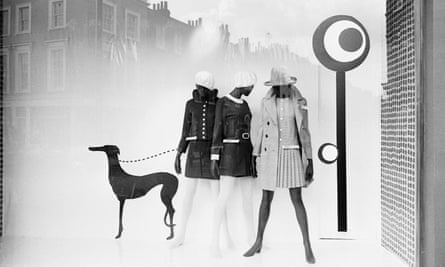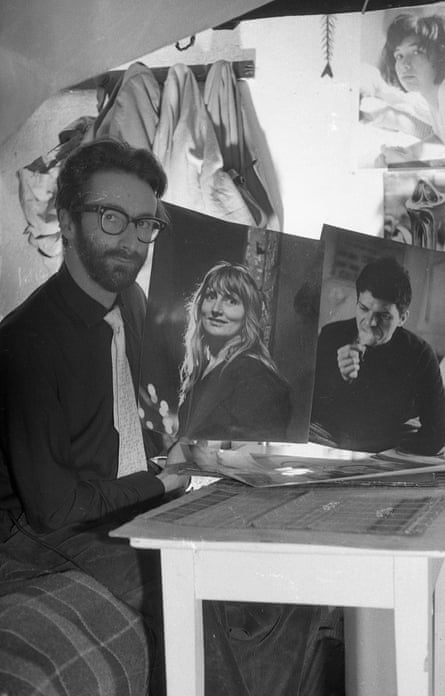Through the 1950s and 60s the photographer Harold Chapman, who has died aged 95, chronicled the denizens of the “Beat hotel” in Paris. Right after a prospect encounter with the photographer John Deakin in Soho, London, in the mid-50s, wherever he had been documenting jazz, Chapman moved to Paris in 1956 and lived at 9 Rue Gît-le-Cœur, the resort in the city’s Latin quarter that grew to become known as a favorite place for Defeat writers such as William S Burroughs and Gregory Corso.
As very well as Burroughs, his neighbours included the American author Harold Norse, and the poet and painter Kay “Kaja” Johnson. For the duration of his sojourn at the Still left Bank lodge – he was the previous visitor to go away when the institution shut its doorways in 1963 – Chapman documented street life in Paris, which includes the food marketplaces of Les Halles, photos of which have been posted in the ebook Vanishing France (1975, with John L Hess).
For the duration of the 60s, Chapman travelled back again and forth between Paris and London, the place he worked as a freelance photographer for Fleet Road newspapers, recording the burgeoning “swinging city”, as Time magazine described London in 1966. Chapman’s talent at documenting before long-to-be-vanishing milieux, underscored by is effective these types of as The Finish Guideline to London’s Antique Street Marketplaces (1974), was accompanied by an ability to seize his subjects without staging pictures.

The poet Allen Ginsberg described him as an “invisible” photographer. The novelist Ian McEwan, who achieved Chapman in 1974, wrote in the Guardian in 2000 that he “took shots like taking breath. In the avenue, he shot people coming out of doorways, or stepping out of taxis, or greeting every single other outside stores.”
There is “no have to have for the contrived shot”, Chapman described in an interview in 1968. “So why established up a photograph when the natural just one is infinitely far better? … All I purpose for is to file the trivial things that regular folks use and take into account unimportant.”
Notwithstanding his drive to seize the standard and the trivial, his favourite – and most famous – shot was a photograph of Ginsberg and his lover Peter Orlovsky sitting down back-to-back again on a double-sided bench in St-Germain-des-Prés, taken all around 1957, an impression that was recreated in the film Howl (2010), starring James Franco as Ginsberg.

Extra than 200 of Chapman’s photos ended up printed in The Conquer Hotel (1984). In the foreword to the ebook, Burroughs, who accomplished his novel The Naked Lunch at the lodge, recalled: “It was a magical interlude, and like all these types of interludes, all as well transient.” Alan Govenar’s documentary, also named The Beat Resort (2012), focuses on Chapman’s recollections of his time at 9 Rue Gît-le-Cœur, along with individuals of the Scottish artist Elliot Rudie. Chapman explained the resort as “always pleasurable … constantly dada … constantly surreal”, through a period of time in which, thanks to the very low value of living, he was able to select and pick out his innovative jobs.
A quantity of Chapman’s pictures, lots of taken on an ancient Contax digital camera, were integrated in the exhibition Conquer Era at the Pompidou Centre in Paris in 2016. The title of a further exhibition, Not Only the Beat Hotel, at Linden Hall Studio in his indigenous Deal, Kent, the subsequent 12 months, was a reminder that Chapman’s do the job extended beyond the coteries and road lifetime of the Still left Bank. His comprehensive portfolio provided spectacular pictures of megaliths in the Languedoc, illustrations or photos for French guidebooks and photographs for cookery textbooks, and he also documented the remains of 2nd world war defences in Deal for the duration of the early 1990s.
Chapman’s vocation as a jobbing photographer appeared not likely during his youth. As he informed the Guardian in 2010: “I’ve had no instruction by any means – I efficiently ran absent from each individual school I ever went to. I studied pictures just by performing it.” The suicide of his father, Harold, a carpenter and builder, who had launched him to pictures, had a profound result on the nine-calendar year-previous Chapman. His mom, Ilse (nee Becker, acknowledged as Elsie), who was half Danish and 50 percent German, sent her son off to a college in German-talking Switzerland, which he explained as a “correctional institution”. Returning to Britain in 1939, Chapman witnessed a bomb descending in the course of the war. He recalled: “I abruptly realised I was useless and time and all the things appeared to be frozen in a whole silence. I reasoned that as I was now dead, I could do everything.”

These early encounters educated Chapman’s outlook, and his craft. He explained to the gallery director Myles Corley in 2017: “You can do what you like if you phase out of staying too affected by culture and all the policies … I hardly ever understood any of them all my lifetime.”
Soon after a life of in depth journey, like nationwide provider with the military in Uganda, and then France, in which he ongoing to live on and off from the 50s to the early 90s, Chapman returned to his father’s cottage in Deal in 1993 with his 3rd spouse, Claire, whom he satisfied in the south of France in 1980 and married in 1990. In 2021, suffering from dementia, he moved to a nursing residence close to Folkestone.
He is survived by Claire (nee Parry), two children, Sue and Richard, from his very first relationship, 4 grandchildren and 9 good-grandchildren.

